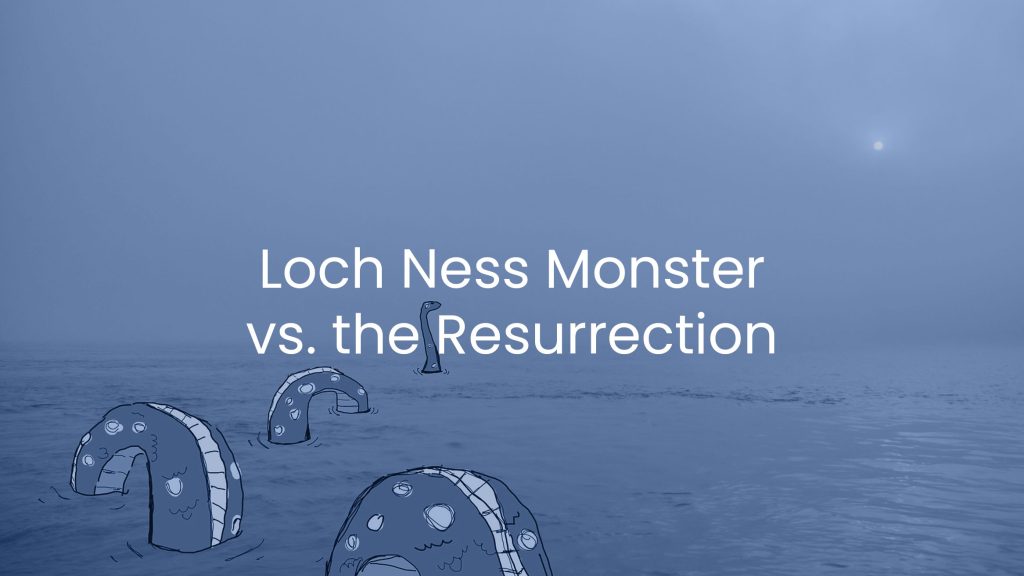|
Getting your Trinity Audio player ready...
|
This Interruption is the last segment of the Grant and Barbara
in Scotland adventure series! We are traveling home today.
I passed on to you what was most important and what had also been passed on to me. Christ died for our sins, just as the Scriptures said. He was buried, and he was raised from the dead on the third day (1 Corinthians 15:3-4, NLT).
On this trip to Scotland, we visited Inverness, and while there, we drove out to Loch Ness, hoping to see the Loch Ness Monster. Colloquially known as “Nessie,” it has been sighted since 565 B.C.
The Loch Ness monster was supposedly photographed in 1934 in what has been called “the surgeon’s photo.” It shows a head with a long neck arching out of the water. Many claim the photo to be fake. But thousands still visit Loch Ness each year—my wife and I included—hoping to see the monster.
While thinking about Nessie (probably 100 percent myth), I began thinking of the resurrection of Jesus and His death, burial, and resurrection (almost certainly 100 percent true). Why do we disbelieve in Nessie and believe in a seemingly impossible resurrection?
Let’s compare the Loch Ness Monster with the Resurrection.
- The Loch Ness Monster has sightings by individuals. The Apostle Paul records in 1 Corinthians 15:6 that “He appeared to more than five hundred brothers at the same time.”
- Every sighting, sketch, and photograph of Nessie has been legitimately challenged. It wasn’t until liberal theology began influencing the church in the early 1900s that Biblical scholars challenged the fact of the resurrection. For 1900 years, there was no legitimate challenge to the resurrection, and those since that time have lacked credibility.
- The myth of the Loch Ness Monster creates a tourist attraction. The truth of the resurrection changed the course of human history and countless individual lives.
If we study the resurrection as an actual event, almost all scholars find trustworthy evidence for an empty tomb, the disciples having legitimate experiences with One whom they believed was the risen Christ, and the Christian church established as the result of the preaching of these disciples.
Seriously considering the three points in the paragraph above, we can only conclude that while the Loch Ness Monster lacks credible evidence, the resurrection of Jesus is true.
Now, the question—what will happen if we neglect such a great salvation?

